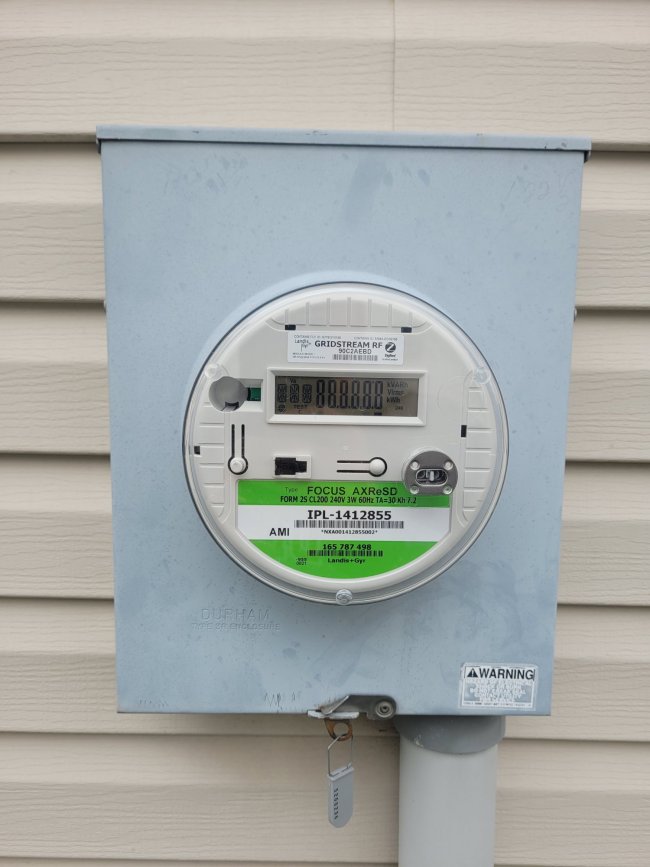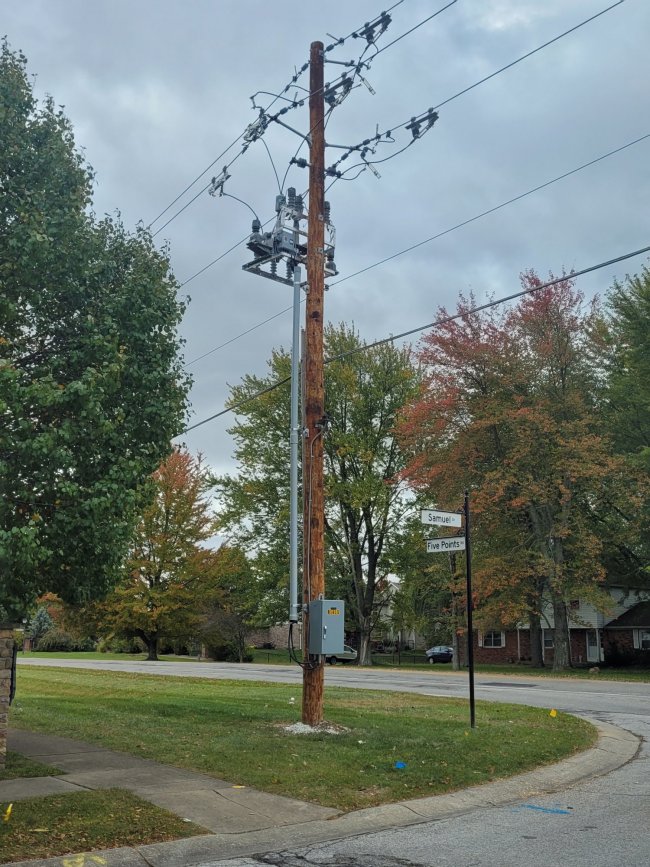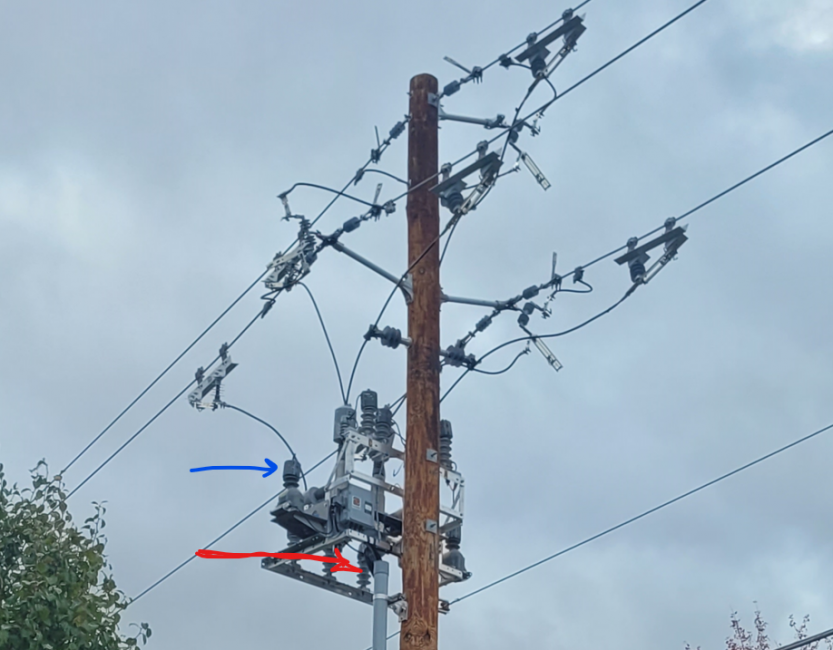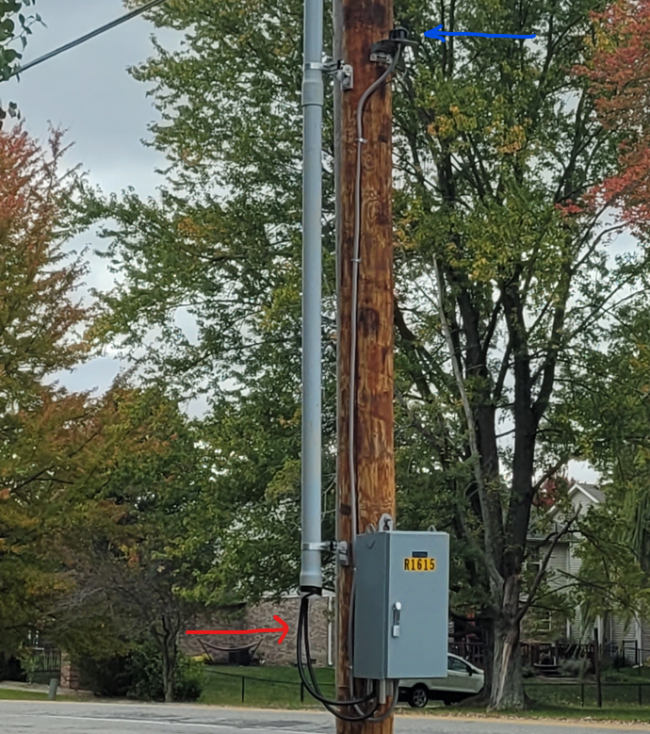Noticed this showed up on my house a couple of weeks ago. Great, the old one was original construction.

Looking around the neighborhood over the following days I realized every house in the neighborhood now has this new meter.
Fast forward to today. I'm driving out one of 3 entrances of the neighborhood (the one off of the emergency route road coincidently) and I spy four utility trucks, one with an auger and new large pole. I think "uh oh, somebody took a pole out, again". But I don't see a damaged pole anywhere. Strange.
I come back home some time later, same route and find this is now at the entry to the neighborhood.

Now, I am not an EE, but there's a whole lot going on there. It strikes me as a convenient coincidence for these two events occurring in quick succession in an area that has had a pretty stable grid for some time. If you look close, you'll see the meter has an RF ID.
I think the utility has established a gain of function. Comments?

Looking around the neighborhood over the following days I realized every house in the neighborhood now has this new meter.
Fast forward to today. I'm driving out one of 3 entrances of the neighborhood (the one off of the emergency route road coincidently) and I spy four utility trucks, one with an auger and new large pole. I think "uh oh, somebody took a pole out, again". But I don't see a damaged pole anywhere. Strange.
I come back home some time later, same route and find this is now at the entry to the neighborhood.

Now, I am not an EE, but there's a whole lot going on there. It strikes me as a convenient coincidence for these two events occurring in quick succession in an area that has had a pretty stable grid for some time. If you look close, you'll see the meter has an RF ID.
I think the utility has established a gain of function. Comments?









